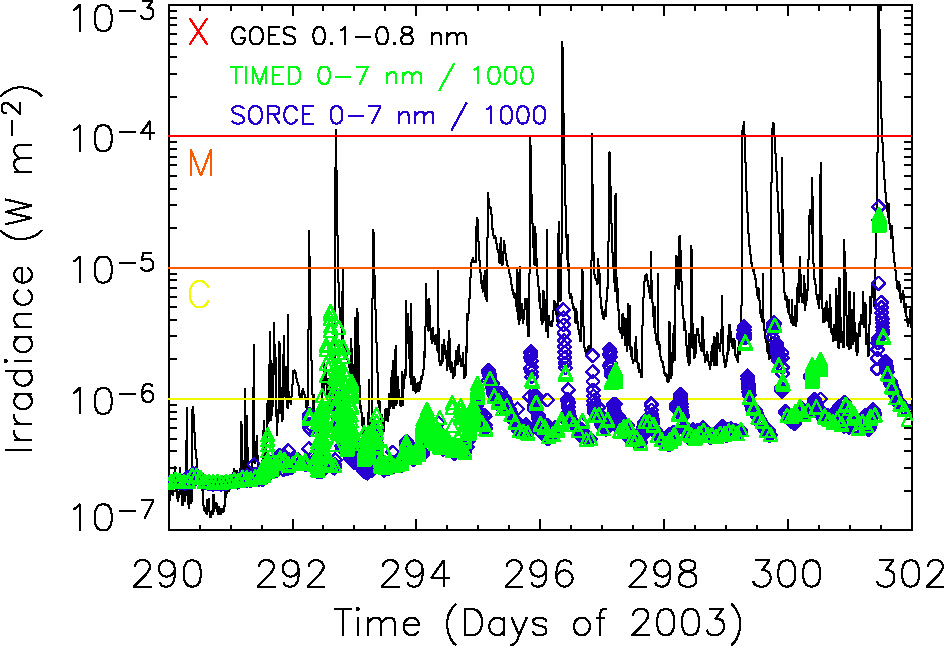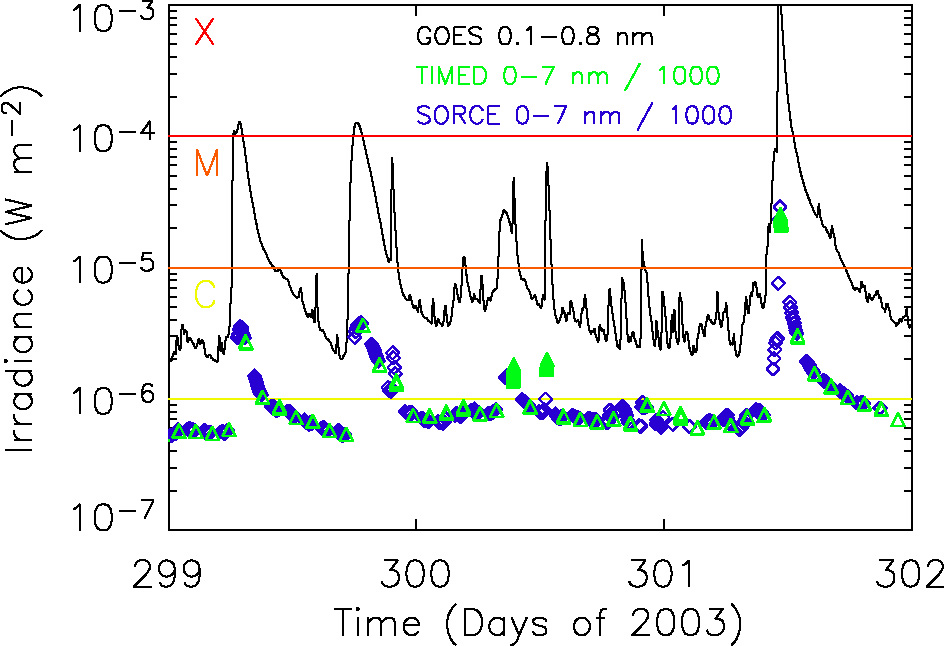The Sun has been extremely active the past several days. The Sun started a series of large flares on October 19 (day 2003/292) and most recently had an extremely large flare on October 28 (day 2003/301). This recent large flare is classified as a X-17 flare based on the NOAA GOES X-ray measurements and is the third largest flare during the past 25 years. The measurements of the solar X-ray radiation from the NASA TIMED satellite (green symbols in the Figure) and NASA SORCE satellite (blue symbols) show that the X-ray radiation increased by a factor of 25 for this large flare and was at elevated levels for over an hour.
The TIMED and SORCE measurements also show an increase throughout the ultraviolet range shortward of 200 nm with increases at some wavelengths larger than a factor of 3. The release of solar energy from this flare is even larger than the solar variations observed during the 11-year solar cycle. The increase of the solar X-ray and ultraviolet radiation has direct impact on the atmosphere energetics and composition of the ionosphere. The flare measurements by TIMED and SORCE are the photon radiation that reach Earth in about 8 minutes. In addition, there were solar proton storms and coronal mass ejections associated with this large flare event, and these energetic particles take from hours to days to arrive to Earth depending on their speed.
This large flare and associated particle storms have caused several space weather incidents such as disruptions for airline communications and damage to satellites, including the loss of a Japanese communication satellite. On the brighter side, aurora was sighted in Boulder, Colorado (40 N latitude) on October 28 and might appear again for the next few nights at lower than usual latitudes.
Movies and pictures of this large flare and CME events as recorded by the SOHO satellite can be viewed at: http://soho.nascom.nasa.gov/hotshots/.
This figure shows the solar X-ray radiation time series during the past 2 weeks, note the quiet period before day 2003/292.
This figure shows the solar X-ray radiation time series during the past 3 days.
This figure shows the solar ultraviolet radiation at three different
wavelengths (temperatures) for October 28, 2003.




